Mastering throw-in routines | Wednesday Wisdom
A throw-in is not all that different from a free kick or a corner; it’s a set-piece that you can train and prepare multiple routines for. There is one major difference, though: while corners and free-kicks are aspects of the game that are coached rigorously from a young age, throw-ins are often neglected. This is madness as, on average, football teams get to take and defend around 50 throw-ins per game. That is a colossal figure, far too big just to ignore. The good news is, though, that (like all set-pieces) throw-ins can be improved upon both in terms of technique and positioning.
By @MerryGuido
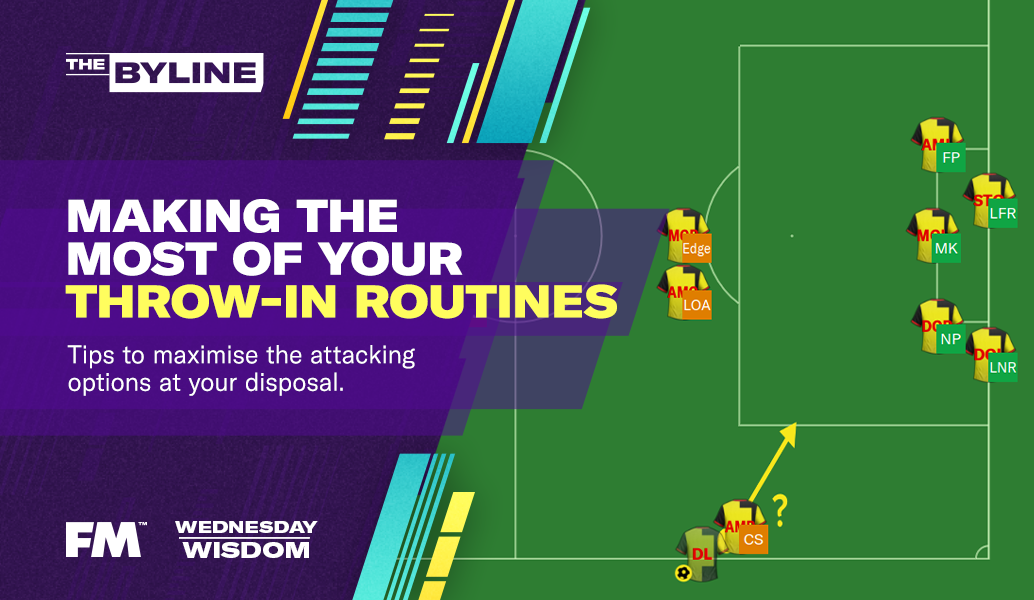
The potential benefits are easy to reap. Many teams keep possession less than half of the time when they take a throw-in, mostly owing to the pressure of the opposing team. If a player lost the ball that often when receiving it to their feet they wouldn’t be a professional. If a team often loses the ball when throwing in, the players have to drop back or position themselves differently, and the balance can be lost. A properly executed throw-in also ensures that the opponent cannot pose any danger.
This reasoning fits well with the rise of the counter-press; throw-ins are ideal situations where your players are put under pressure because there is a higher chance that your team loses the ball. Keeping possession gives you a greater chance of dominating your opponent while minimising the possibility of conceding devastating counter-attacks.
Let’s look at three different set-ups, you can look to implement; long throw-ins, quick throw-ins and smart throw-ins.
The Long throw-in
The basic premise of these almost weaponised setups is as simple as it is useful. When a team gets a throw-in anywhere within range of the penalty area, a player will be designated to hurl the ball into the box almost like a substitute corner. This generally is a long, flat throw, which is a nightmare to defend because it is difficult to intercept as it’s hard to anticipate the ball’s flight.
When I set out to recreate such a throw-in routine, the process is all about keeping things simple. Making sure you understand the bigger picture is one thing many people forget to do when either creating a tactic or designing a set-piece.
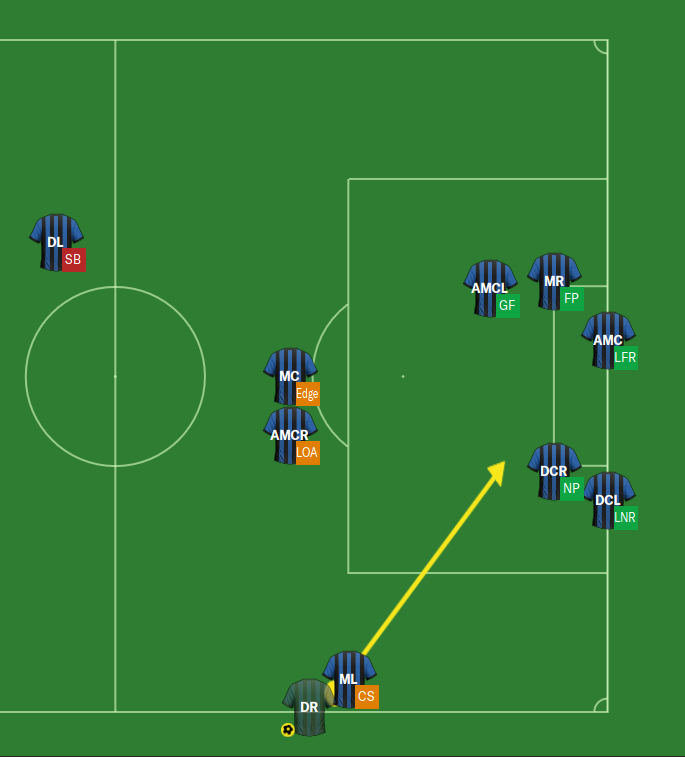
The idea behind this setup is relatively straightforward. A player who has a high Long Throws attribute hurls towards the front post, where two of your players wait. I highly recommend you place your most potent aerial threats there. At the far post, you have another player rushing in to pounce on possible rebounds or deflected headers. The other players are positioned in two banks in and around the penalty area to recycle possession, should a defender clear the ball.
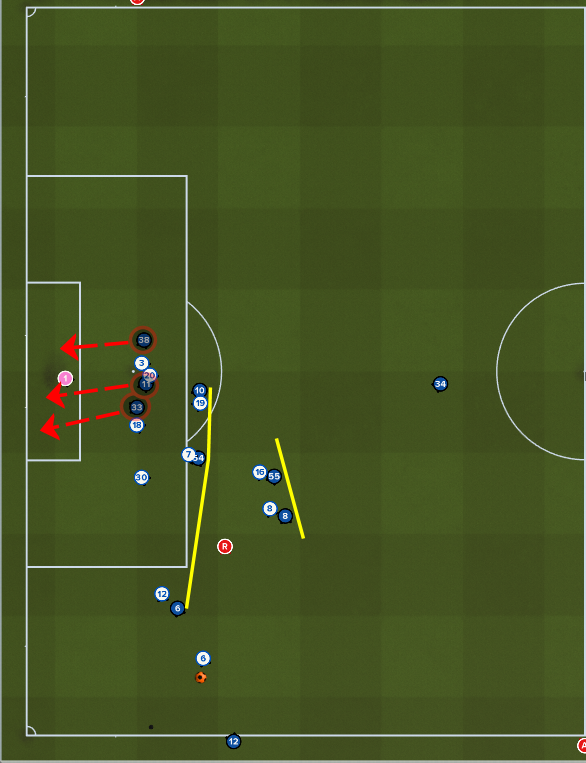
To make this routine work, you need a player with 14+ as a Long Throw attribute and a few players who are not only a threat in the air, but also intelligent and aggressive enough to recognise an opportunity and pounce upon that moment.
The quick throw-in
You can use a throw-in as a means to launch a counter-attack, but you have to know how to set it up properly. As you know, players cannot be offside when throwing in, so teams can and should take advantage of this.
But a quick throw-in is not just about being quick – without an idea, you will lose the ball. Creating options and having movement are the key components to a successful quick throw-in.
The objective here is to create options for a fast follow-up pass, either back to the throw-in taker or towards a team-mate in space so that the team can advance, potentially by hitting a diagonal cross-pass to find space on the other flank. For quick distribution to be effective, you have to make it difficult for an opponent to pin down your players and pressure them when they receive the ball.
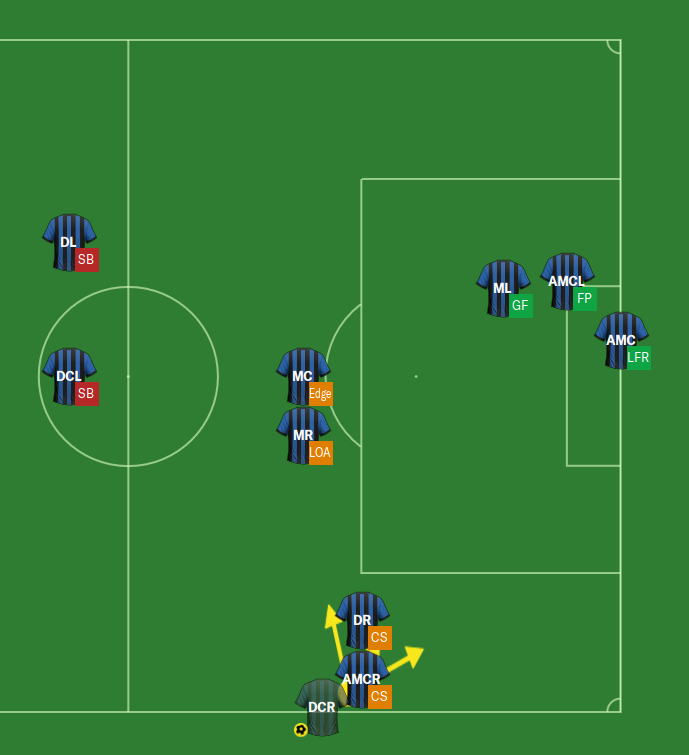
The players set to lurk around the area will often come short, offering additional passing alternatives. Similarly, one of the two players set to stay back will move towards the side-line as well. The other players will remain in a position where they can move into space. On the other side of the pitch, your players are often in one-on-one situations, where they can threaten the defence with pacy break-aways. The throw-in taker is under instructions to throw the ball in quickly, naturally.
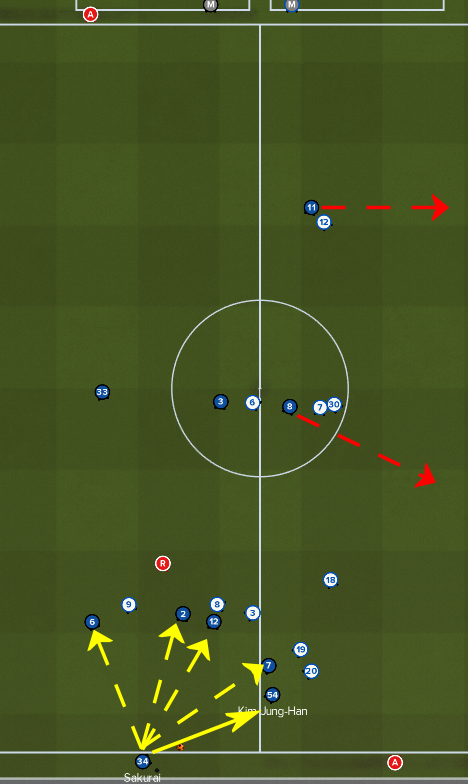
Unlike the previous routine, this one does not require any throw-in attributes as such to be successful. Rather than physical power and technique to power an effort, this routine relies on the speed of thought of the throw-in taker; recognising which player is in a position to receive the ball. Attributes such as Vision and Decisions are far more important. For the recipients, Vision, Positioning, First Touch and Technique are useful attributes to have.
The smart throw-in
The smart throw-in is not too dissimilar from the quick one above. The objective is to provide multiple options for the throw-in taker to choose from and let him judge if the situation at hand warrants a short throw, a quick throw or a long throw. Essentially, you are employing a mixed approach, while simultaneously positioning your players in such a way that all three options remain viable.
With all these options available to the throw-in taker, it sometimes happens that the throw-in taker makes the wrong choice and loses the ball because the defenders cover the right option. The more likely outcome, however, is that the defenders cover and mark the wrong option(s) and another player has enough space to receive the ball. When your players are spaced adequately across the pitch, it is difficult for a defending side to cover all options.
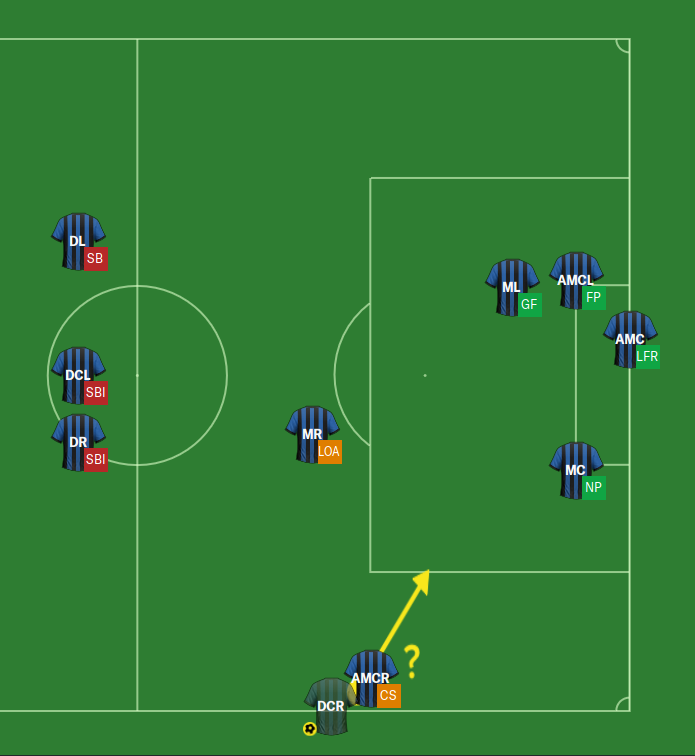
In many cases, the two defenders instructed to stay back if needed will offer themselves as additional short options, which makes their movement patterns unpredictable for opposing players to anticipate. In this setup, the players will generally fan out, and with the mixed distribution, the throw-in taker can spot which team-mate has found a pocket of space and would make a viable passing option.
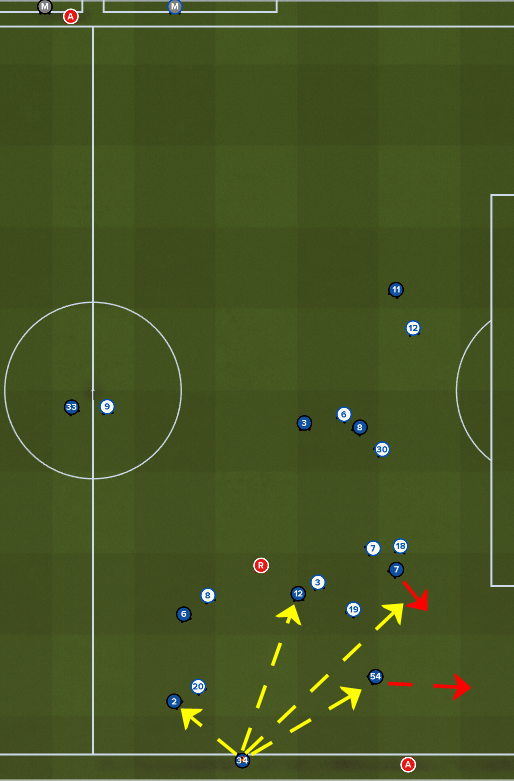
Like the quick throw-in routine, this setup requires mental skills rather than physical ones. The throw-in taker needs to spot pockets of space and pick the best option for his throw-in. His key attributes would be Vision and Decisions. For the recipients, again, Vision, Positioning, First Touch and Technique are useful attributes to have.
It's time to take throw-ins seriously, to maximise ball retention and create chances as a result. Choosing one of the options mentioned depends on the players at your disposal and the style that you’re trying to implement.
Hopefully, this has served as an introduction into thinking more about the most underrated set-piece that could be the key to unlocking your team’s full potential.

















